
If you're an amputee, understanding the types of prosthetics can help you choose a device that matches your life, personality, and needs. In this guide, we will provide an overview of hand, arm, shoulder, foot, leg, hip, ear, nose, and eye prosthetics, as well as advanced prostheses such as myoelectric, intelligent, and bionic devices.
What Are Prosthetics?
Prosthetics are artificial devices or limbs designed to replace or supplement the function of missing body parts, helping people restore their lost mobility and perform daily life activities. They serve to improve the quality of life of people who have lost limbs due to an injury or a medical condition.
Prosthetics make it possible for amputees to enjoy activities they used to partake in before their limb loss. With the right prosthesis, many amputees can exercise and engage in sports, go back to their occupation, and share invaluable moments with their family and friends.
Types of Prosthetics
There are many types of prosthetic devices to restore mobility and/or appearance. Let's look at how they work and then discuss the specific types for each form of amputation or limb difference.
Cosmetic Prosthetics
Cosmetic prostheses are designed to restore the appearance of a lost or damaged body part, but provide little or no function. A glass eye, for example, can be made to appear identical to a person's remaining eye, but does not restore their vision. Silicone can be used to replicate fingers, toes, and parts of damaged faces.
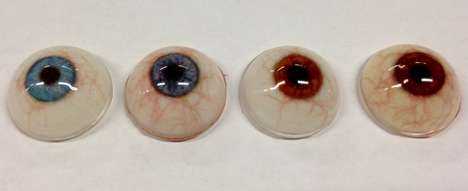
Body-Powered Prosthetics
These prosthetics are controlled using cables activated by moving parts of the remaining limb.
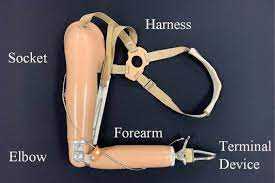
High-Performance Prosthetics
Carbon fiber blades empower amateur and competitive athletes with limb differences and amputations to run and excel at sports.
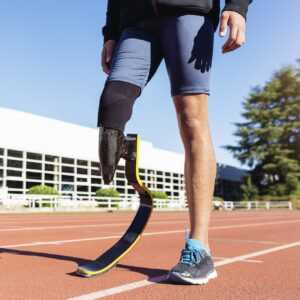
Myoelectric and Bionic Prosthetics
Advanced prosthetics have made significant strides in recent years, incorporating cutting-edge technology to provide users with more precise control and natural movement capabilities. Myoelectric prostheses utilize electronic sensors to detect electrical impulses generated by the user's muscles, enabling the device to accurately simulate natural movement. Intelligent prostheses use machine learning algorithms to anticipate the user's movements and adjust the device accordingly. Bionic prostheses use microprocessors and advanced computer technologies to provide users with highly responsive, precise control over the device. These innovations in prosthetic technology are helping amputees regain their independence, enabling them to perform day-to-day activities with greater ease and efficacy.
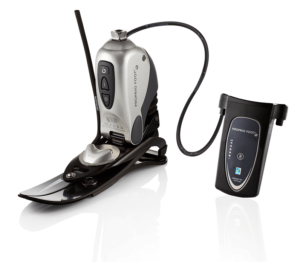
Direct Socket Systems
Transtibial and transfemoral prostheses such as the Ossur direct socket utilize a unique socket design that provides enhanced stability and comfort to the user.
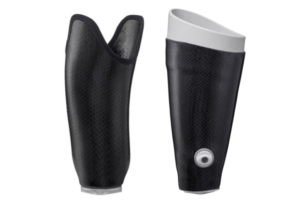
Prosthetic Limb Types and Terms
If you're new to the world of prosthetics, learning the terminology can help you better understand and express your needs. Here are the names for different types of prosthetics based on the body parts they replace.
Upper Limb Prostheses
These prosthetics aid people who have lost or were born without a hand, arm, and/or shoulder.
Transradial
Transradial prosthetics are for people with below-elbow amputations.
Transhumeral
A transhumeral or above-elbow prosthetic arm is designed to replace the lost functionality of the elbow and, in some cases, the shoulder.
Lower Limb Prostheses
These prosthetics aid people who have lost or were born without a foot or leg.
Transtibial
A transtibial prosthetic replaces the limb below the knee.
Transfemoral
Transfemoral prostheses are designed to replace a missing foot, lower leg, and knee.
Facial Prosthetics
Facial prosthetics are designed to replace missing body parts such as the nose, ear, and eye, offering a natural look and promoting self-confidence. Facial prostheses are often made with silicone and blended into the rest of the face using techniques developed by the movie special effects industry.
Materials Used in Prosthetics
The choice of materials used in prosthetics is influenced by various factors such as the requirements and needs of the amputee and the type of prosthetic device required. Each material offers unique benefits and drawbacks, and professional guidance is essential in deciding which material is the most appropriate, considering factors such as the device's functionality and budget.
Popular materials used for constructing prosthetic devices include plastic composite materials, which offer durability, lightweight, and overall strength. Silicone provides comfortable and soft padding for stump sockets, and can be used to closely imitate fingers, noses, and cheeks. Metal and alloys are also used for certain prosthetics, providing strength and durability comparable to human bone. The use of carbon fiber has become increasingly popular due to its light weight, strength, and ability to flex and bend without breaking.
Skilled prosthetists work closely with amputees to select the most appropriate materials for a specific type of device and ensure its long-lasting efficiency.
How to Choose a Prosthetic
Selecting the right prosthetic device involves an assessment of the patient's physical needs, personal preferences, and lifestyle. During the evaluation, the patient's needs will be reviewed carefully, taking into account their specific physical and medical requirements, goals, and aspirations. The evaluation process will entail assessing the patient's physical condition, including a range of motion, strength, and limb function, and providing healthcare professionals with the necessary information to recommend the most suitable prosthetic device. The team will also consider the patient's lifestyle and interests, aiming to design the device in a way that aligns with their daily routine and future plans. They may also provide recommendations on the best resources for ongoing support, rehabilitation, and maintenance of the device. Choosing a prosthetic device is a crucial decision, but with careful evaluation and guidance from healthcare professionals, individuals can select the best device to suit their unique needs.
Prosthetics are an essential tool that can help physically challenged individuals gain mobility and independence. These life-changing devices can significantly improve the quality When selecting a prosthetic device, it's essential to receive guidance and support from healthcare professionals and consider your unique needs and personal lifestyle. By working with experienced medical professionals and identifying your specific requirements, you can choose the prosthetic device that best suits you.
Image via Deposit Photos
Coffee junkie. Spoonie. Writer about all things chronic illness and mental health. Friend of animals everywhere.
Dr. Wilson graduated from Rosalind Franklin University of Medicine and Science and completed her residency in Internal Medicine at Advocate Good Shepherd Hospital in Barrington, IL. Dr. Wilson specializes in providing culturally competent and trauma-informed care to patients with physical disabilities. In addition to her private practice, she works as a science communicator, teaching health literacy to middle school and high school students in her local school district.










Start the discussion at community.theabilitytoolbox.com